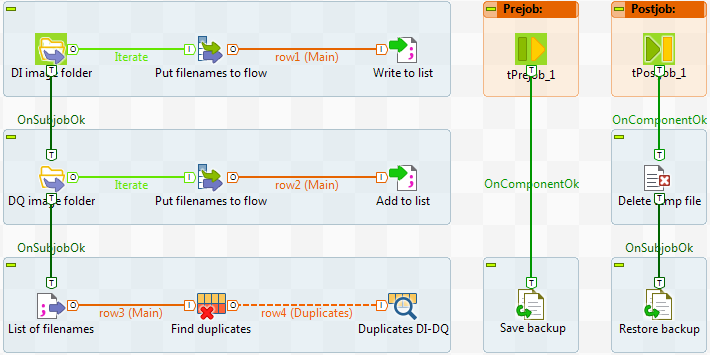Using the tPrejob and tPostjob components
The tPrejob and tPostjob components are designed to make the execution of tasks before and after a given Job easier to manage. These components differ from other components in that they do not actually process data and they do not have any components properties to be configured. A key feature of these components is that they are always guaranteed to be executed, even if the main data Job fails. Therefore, they are very useful for setup and teardown actions for a given Job.
To use these tPrejob and tPostjob components, simply drop them onto the design workspace as you would do with any other components, and then connect tPrejob to a component or subJob that is meant to perform a pre-job task, and tPostjob to a component or subJob that is meant to perform a post-job task, using Trigger connections. An orange square on the pre- and post-job parts indicates that they are different types of subJobs.

- Loading context information required for the subJob execution.
- Opening a database connection.
- Making sure that a file exists.
- Cleaning up temporary files created during the processing of the main data Job.
- Closing a database connection or a connection to an external service.
- Any task required to be executed, even if the preceding Job or subJobs failed.
For a use case that uses the tPrejob and tPostjob components, see Orchestration (Integration)
Did this page help you?
If you find any issues with this page or its content – a typo, a missing step, or a technical error – let us know how we can improve!
